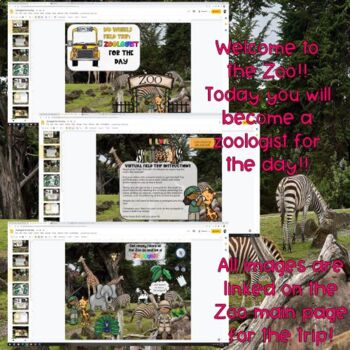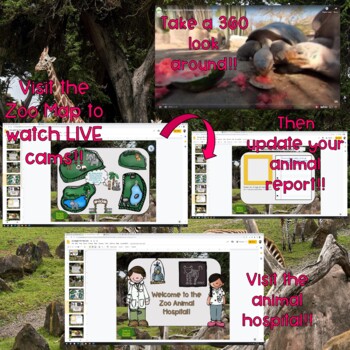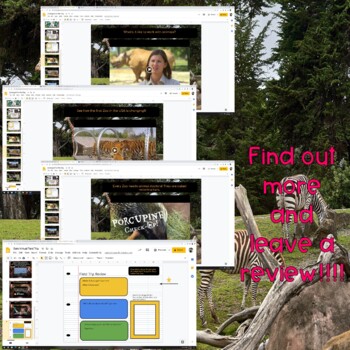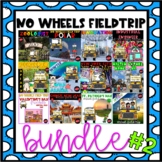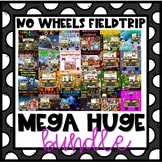Zoologist for the Day Virtual Field Trip for Google Slides: Distance Learning
- Google Drive™ folder

Also included in
- Let's take many Virtual Field Trips this year!!! This No Wheels Field Trip Collection will make this the best year ever! These field trips focus on following STEAM careers at their place of work! So far each new trip just gets better and better!!! I literally am having the time of my life planning aPrice $32.00Original Price $47.00Save $15.00
- Let's take many Virtual Field Trips this year!!! This No Wheels Field Trip MEGA Collection will make this the best year ever and many more years to come!! In this MEGA Bundle.... you will get access to 50 No Wheels Field Trips at a LOCKED-IN PRICE!!Currently, there are 44 Field Trips included... 6 mPrice $132.00Original Price $187.00Save $55.00
- Here's your bundle Britta! Thank you so much for loving the No Wheels Field Trips!! These are all great choices!!Price $35.00Original Price $43.50Save $8.50
Description
Let's take a Virtual Field Trip to the and become a Zoologist for the Day! This No Wheels Field Trip is just what you need to study a STEAM career when remote learning or in person learning when field trips aren't possible! Open your students eyes and thoughts to the many jobs available in zoology!
What is zoology? What exactly does a zoologist do? Where do they work?
Visit the first Zoo in the United States!
Watch so many live animal web cams, and do your job as a zoologist. You have to write up an animal behavior report!
Visit the animal hospital at the zoo and learn about how veterinarians help sooo many animals at the zoo and beyond the zoo!!!
Students will believe you are the most AMAZING teacher... which YOU are! Learn real facts and information on your NO WHEELS FIELD TRIP to become a Zoologist for the day! Make it a whole week experience and create HYPE with students.
Zoo school actually has 36 lessons that can be done throughout a month in quick excerpts each day! Students will love this experience and truly understand a new career and type of scientist!
Included in the experience:
24 different linked websites and slides
Main Zoo Slide
The Zoo Map Slide
Animal Hospital Slide
Animal Report Project Slide
4 inserted videos for easy viewing
Field trip review
If you love this field trip..... check out the NO WHEELS FIELD TRIP to Carlsbad Caverns and learn all things BATS!
Thanks for visiting!!! I have a new STEAM Freebie for you!! STEAM Posters
..............................................................................................................................................................................
Other products for distance learning:
Creating inquiry is one the best ways to teach STEM/STEAM... Check out See, Think, Wonder STEAM!
Want more exciting ways to use all of these products? Check out the I Heart STEAM Blog and I Heart STEAM Teacher Podcast!!!!


